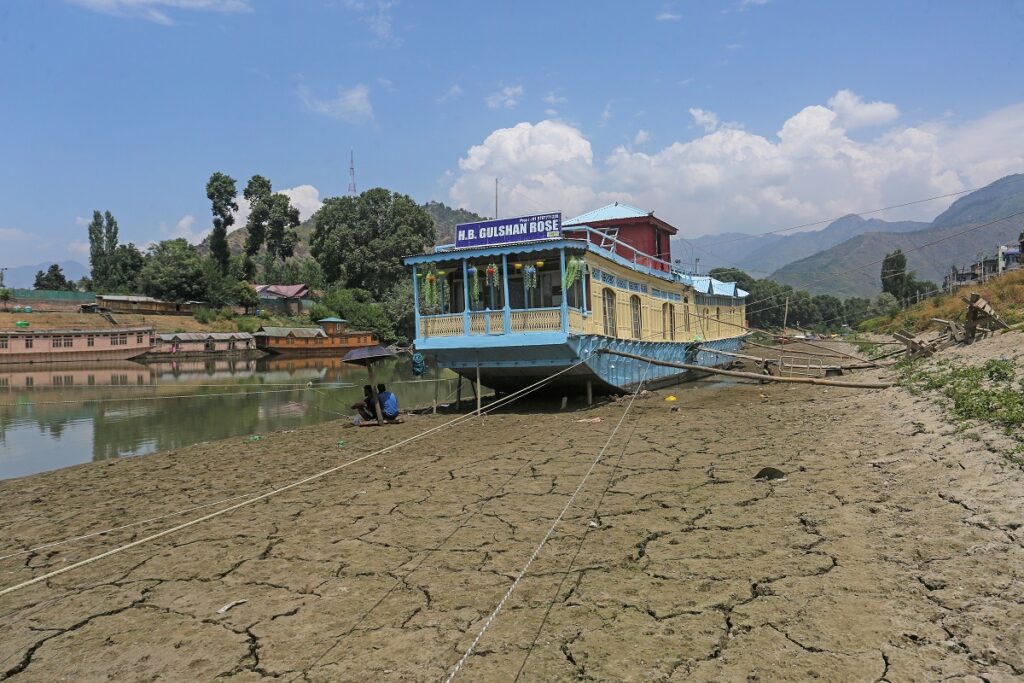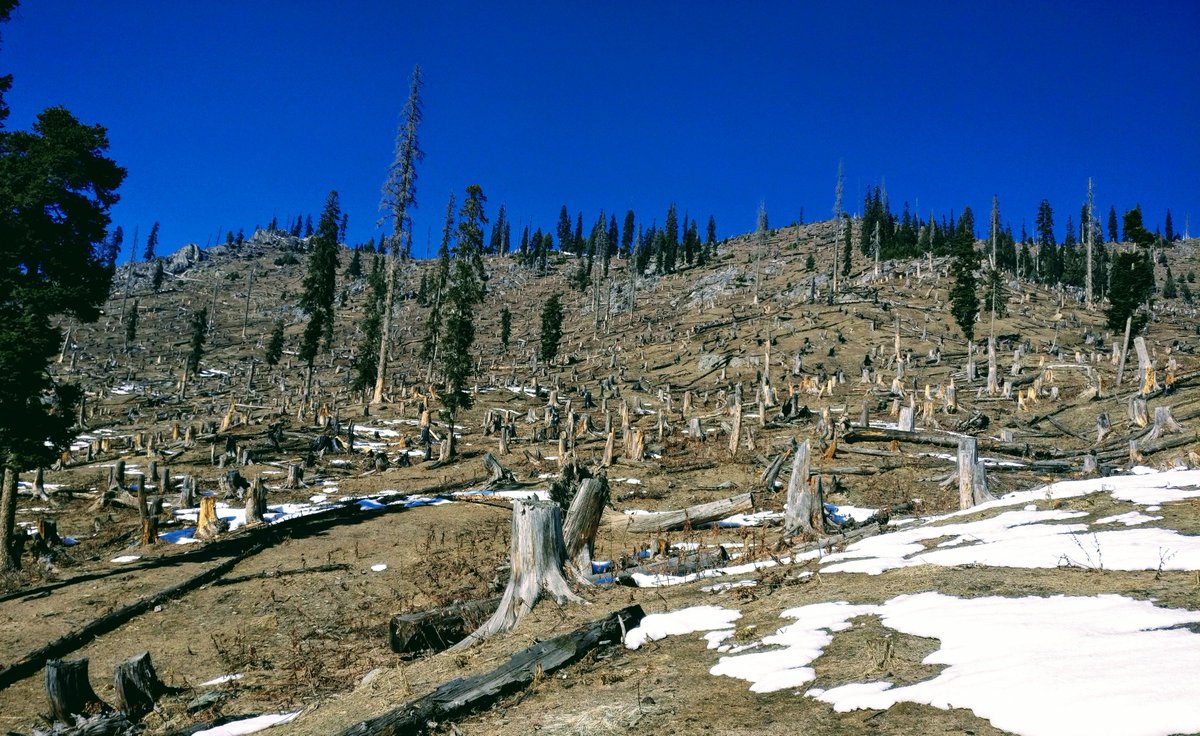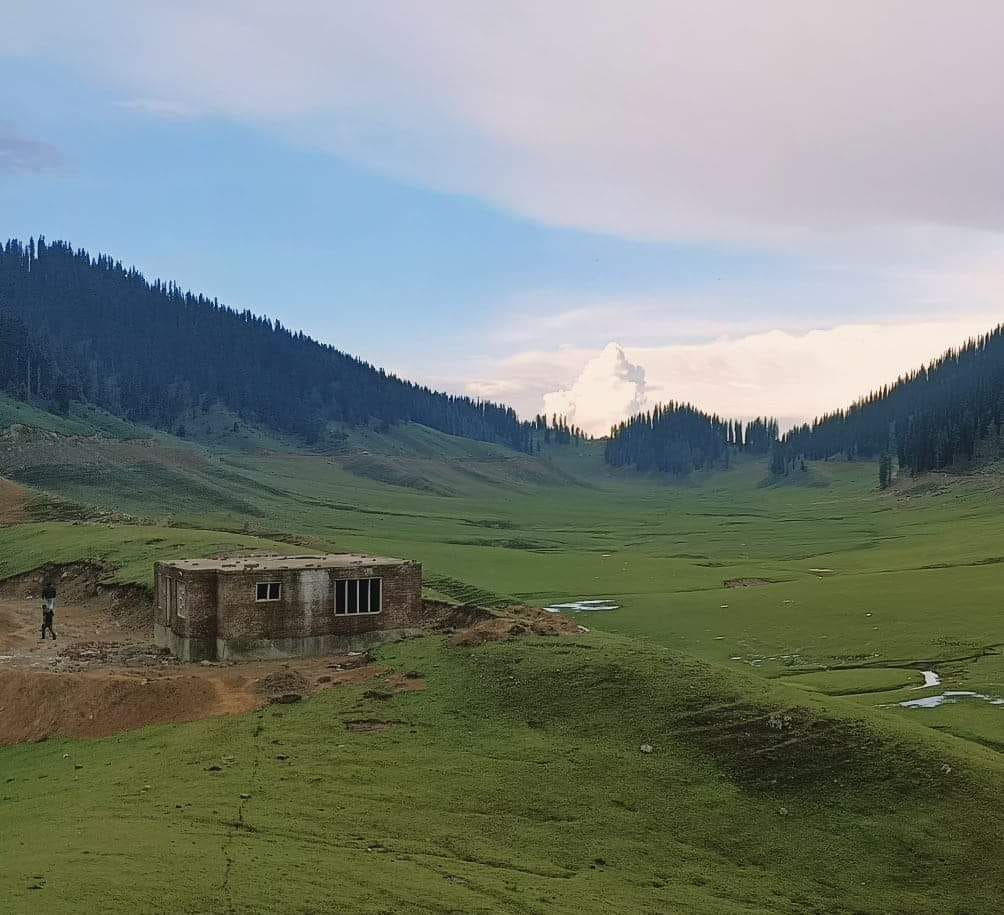Once a Summer Sanctuary, Kashmir Now Grapples with Rising Temperatures, Threatening its Pristine Ecology and Tourism Industry
By: Javid Amin
Kashmir, the “Crown Jewel of India,” has long been a symbol of serenity and escape. Nestled amidst the snow-capped peaks of the Himalayas, the valley offered a cool respite from the sweltering heat that defines much of South Asia. Srinagar, the “summer capital” of Jammu and Kashmir, was a particularly sought-after destination for those yearning for a breath of fresh, crisp mountain air. However, this idyllic image is rapidly dissolving as the relentless grip of climate change tightens around the region.
In recent years, Kashmir has witnessed a dramatic rise in temperatures, shattering historical records and leaving residents and visitors sweltering. The days of balmy summer evenings and refreshing mountain breezes seem like a distant memory. May, a month traditionally associated with the onset of spring, now sees the mercury routinely exceeding 35°C (95°F). This alarming trend has severe consequences, cascading across the valley’s delicate ecosystem, traditional way of life, and its vital tourism industry.
A Symphony of Sorrow: The Intertwined Threats of Climate Change
The story of Kashmir’s changing climate is not one of a single threat, but a complex symphony of interwoven dangers. Here, we delve deeper into the specific challenges the region faces:
-
The Melting Crown: A Stark Reminder: Glaciers, once seemingly permanent fixtures of the Himalayan landscape, are receding at an alarming rate. Satellite imagery paints a bleak picture, with glacial lakes expanding as the frozen giants shrink. This glacial melt poses a double threat. Rising sea levels threaten coastal communities worldwide, while the disruption of the natural flow of freshwater into Kashmir’s rivers and streams jeopardizes future water supplies.
-
A Perfect Storm for Agriculture: Kashmir’s agricultural sector, the backbone of the region’s economy, is bearing the brunt of the rising temperatures. The traditional window for cultivating crops is shrinking as heatwaves become more frequent and intense. Farmers struggle to keep their crops from withering under the relentless sun, with yields declining significantly. Water scarcity further compounds their woes. The receding glaciers and erratic rainfall patterns disrupt the natural replenishment of groundwater reserves, making irrigation a constant challenge. This “perfect storm” threatens the very foundation of Kashmir’s food security.
-
Paradise Lost for Tourists: The tourism industry, another cornerstone of Kashmir’s economy, is feeling the heat quite literally. Tourists who once flocked to the valley to escape the summer heat are now encountering temperatures that rival those of the destinations they were trying to flee. The pleasant summer months, once ideal for trekking, sightseeing, and enjoying outdoor activities, are now becoming increasingly uncomfortable and even dangerous. This shift in climate is deterring tourists, leading to a decline in visitor arrivals and a significant economic impact.
-
Beyond Tourism: A Broader Impact on Livelihoods: The impacts of climate change extend far beyond the tourism industry. Rising water temperatures threaten fish populations, jeopardizing the livelihoods of fishermen who rely on these resources for income and food security. Traditional crafts, such as carpet weaving and wood carving, are dependent on specific climatic conditions for the raw materials they use. Changes in climate disrupt the availability and quality of these materials, impacting livelihoods. Additionally, the decline of wildflower blooms due to heatwaves affects honey production, impacting beekeepers’ income.
-
A Delicate Ecosystem on the Brink: The rise in temperatures is not just a discomfort for humans; it disrupts the delicate balance of Kashmir’s entire ecosystem. Heatwaves create tinderbox conditions, making forests more susceptible to wildfires. These fires not only destroy valuable habitats for flora and fauna but also release greenhouse gases, further accelerating climate change. Rising temperatures can push plant and animal species beyond their tolerance limits, leading to population decline and potential extinction events. Additionally, heatwaves can disrupt the intricate dance between plants and pollinators, impacting food production and ecosystem health.
Building Resilience: A Roadmap for a Sustainable Future
The situation in Kashmir is a stark reminder of the urgency of addressing climate change. However, there is still hope. Here are some potential solutions that can help the region adapt to the changing climate:
-
Investing in Renewable Energy: Shifting towards renewable energy sources like solar and wind power can reduce reliance on fossil fuels and decrease greenhouse gas emissions. This not only helps mitigate climate change but also provides sustainable energy solutions for the region.
-
Promoting Sustainable Agriculture: Adopting drought-resistant crops, utilizing water-efficient irrigation techniques, and fostering regenerative farming practices can help farmers improve yields and adapt to changing weather patterns.
-
Developing Climate-Smart Tourism: The tourism industry can adapt by promoting off-season travel, encouraging eco-tourism practices, and focusing on activities that can be enjoyed in warmer weather.
-
Investing in Climate Education: Raising awareness about climate change and promoting sustainable practices can empower communities to take action. Educational programs in schools and communities can teach the importance of conservation, renewable energy, and sustainable agriculture. By fostering a culture of environmental stewardship, Kashmir can build a more resilient and informed population.
-
Revitalizing Traditional Practices: Kashmir has a rich history of adapting to its environment. Reviving and integrating traditional water management techniques, such as rainwater harvesting and indigenous irrigation systems, can help conserve water resources. Additionally, promoting local, climate-resilient crops that have historically thrived in the region can enhance food security.
-
Investing in Green Infrastructure: Developing green infrastructure, such as urban forests and green roofs, can help regulate temperatures, improve air quality, and mitigate the impacts of heatwaves. These efforts can create a more comfortable and healthy living environment for residents and visitors alike.
-
Strengthening Early Warning Systems: Investing in early warning systems for extreme weather events, such as heatwaves and floods, can help communities prepare and minimize the damage caused by these events. This includes developing effective communication channels to disseminate accurate and timely warnings to the public.
-
Fostering International Cooperation: Climate change is a global challenge that requires a global solution. Kashmir’s plight serves as a microcosm of the larger issue, highlighting the need for international cooperation in addressing climate change. Collaborative efforts to develop and deploy clean energy technologies, promote sustainable practices, and provide financial assistance to vulnerable regions are crucial in building a more resilient future for all.
A Call to Action: Protecting Paradise for Generations to Come
The fight against climate change is not just about saving Kashmir; it’s about protecting the delicate balance of our planet for all its inhabitants. The solutions outlined above require a collective effort from individuals, communities, governments, and the private sector. Here are some ways you can contribute:
-
Reduce Your Carbon Footprint: Individuals can make a difference by reducing their carbon footprint through actions such as using energy-efficient appliances, minimizing car usage, and opting for sustainable products.
-
Support Sustainable Businesses: Choose to support businesses that prioritize sustainability in their practices. This encourages the development and adoption of environmentally friendly solutions.
-
Advocate for Climate Action: Raise your voice for climate action by contacting your elected officials and urging them to support policies that address climate change.
-
Spread Awareness: Educate others about the challenges posed by climate change and the importance of taking action. Share information and resources to encourage a collective response.
-
Travel Responsibly: If you choose to visit Kashmir, opt for eco-tourism practices that minimize your environmental impact. Support local businesses and respect the natural environment.
By working together and implementing these solutions, we can create a future where Kashmir’s breathtaking beauty remains a haven for generations to come. Let us turn the tide on climate change and ensure that the “Crown Jewel of India” retains its crown of snow-capped peaks and cool, refreshing breezes.



